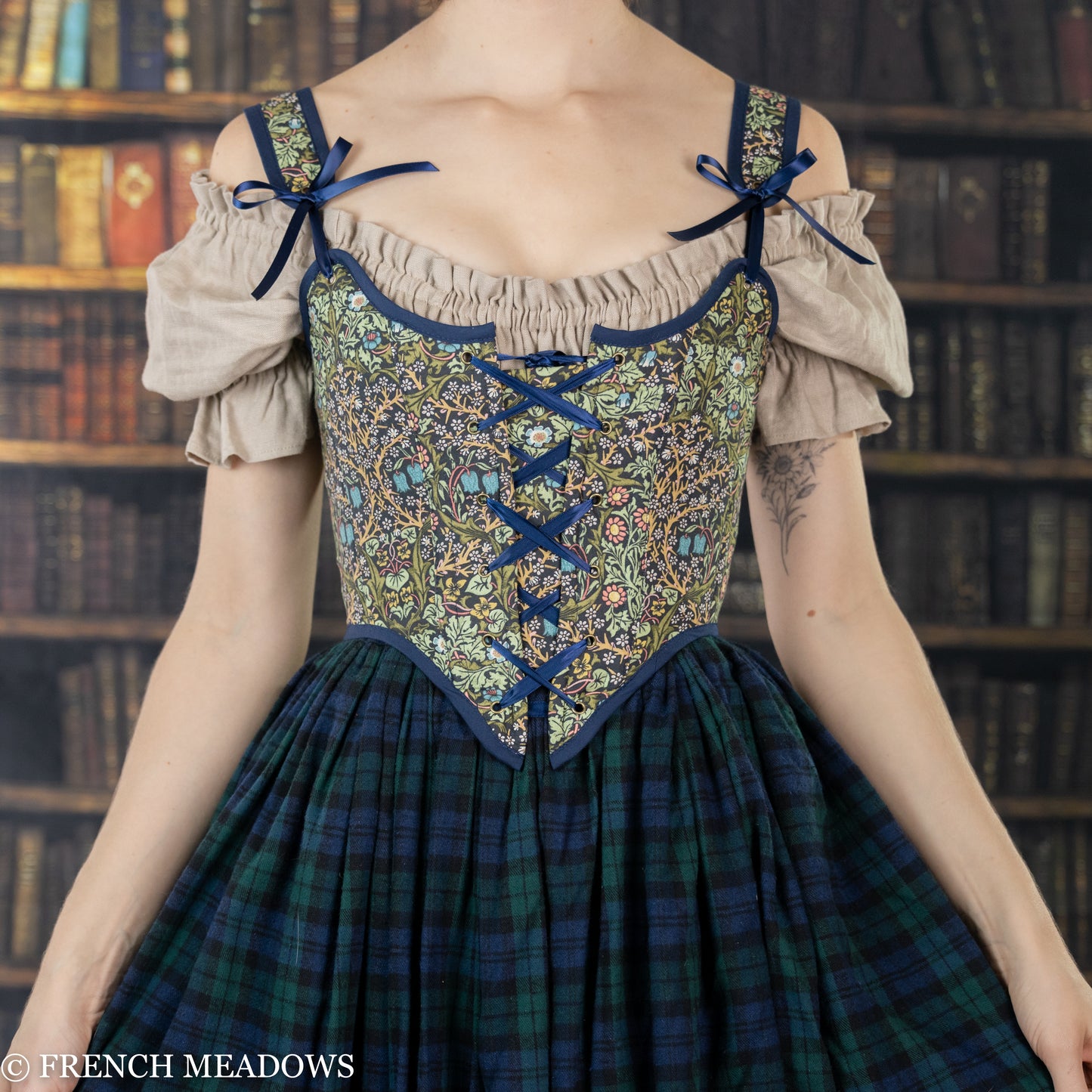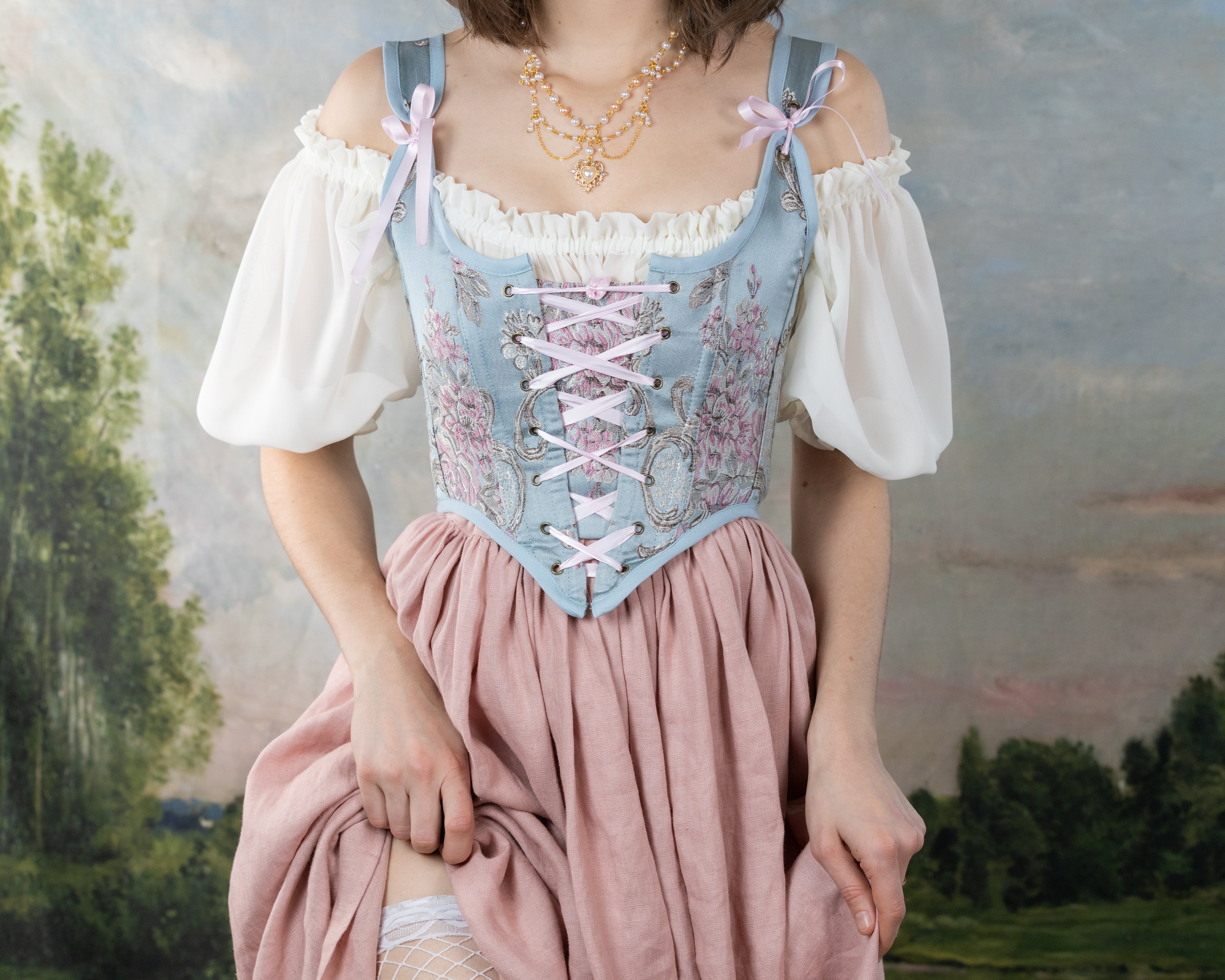Ah, corsets! The quintessential symbol of feminine beauty and elegance, or the bane of women's existence? It all depends on who you ask. But one thing is certain: corsets have been around for centuries, and their history is as fascinating as it is controversial.

Let's start at the beginning. The earliest recorded evidence of corsets dates back to ancient Greece, where women wore a garment called a "strophium" to shape and support their breasts. This was basically a strip of cloth wrapped around the chest and tied in the back. Not quite a corset yet, but it was a start!
The true precursor to the corset, however, was the "stays" worn by women in medieval Europe. Stays were designed to create a straighter line from the shoulders to the hips, giving the illusion of a longer, leaner silhouette. The stays were made from a combination of fabric and stiffeners, and were often heavily boned to provide support. This was also the era when the term "corset" first started to be used, coming from the French word "corps," meaning body.
The 18th century stays were typically made of silk or cotton and were often embellished with lace, embroidery, or decorative ribbons. Unlike earlier corsets, which had a conical shape and emphasized a smooth, straight front, Rococo stays were designed to create a more curvaceous silhouette. They had a pointed front and back, and a shaped bustline that emphasized the natural curves of the body.

In the Victorian era, corsets became even more popular, with women going to great lengths to achieve the perfect hourglass figure. Corsets were designed to accentuate the curves of the female form, with a more natural waistline and fuller bust. Of course, this was still achieved through the use of boning and lacing, but the overall effect was softer and more graceful.
By the early 20th century, the corset had evolved again. The S-bend corset was introduced, which pushed the bust forward and the hips back, creating an exaggerated hourglass shape. This era also saw the introduction of the bra, which allowed women to achieve a similar shape without the need for a corset.
The 1920s and 30s saw a shift away from the corset as women started to embrace looser, more comfortable clothing. While some women still wore corsets, they were no longer the fashion staple they had once been. However, the corset made a comeback in the 1950s, thanks in part to the rise of pin-up culture. Women wanted to achieve the curvy, feminine figure popularized by actresses like Marilyn Monroe, and the corset was the perfect solution.
In the 1980s, the corset took on a new role as a fashion accessory. Madonna famously wore a corset as outerwear in her "Like a Virgin" music video, and the corset became a popular item in the punk and goth scenes. The corset was no longer just a garment worn to achieve a particular shape; it was a fashion statement in its own right.
In the 21st century, the corset has experienced a resurgence in popularity. Today's corsets are often more comfortable and flexible than their historical counterparts, with modern materials like spandex and elastic used in their construction. They're also more accessible than ever before, with a wide range of styles and sizes available to suit women of all body types.

Of course, there are still those who argue that corsets are oppressive and harmful to women. And it's true that there have been many negative aspects associated with corsets throughout history. They've been used to enforce strict beauty standards, and have caused significant harm to women’s bodies when worn incorrectly. But it's also important to remember that many women have worn corsets throughout history by choice, as a way to feel beautiful and confident in their bodies. Corsets have been used for centuries, and the historical context in which corsets were used varied by time period and culture, and so did the social perceptions of their use.
Today, corsets are often worn as a fashion statement rather than a functional garment. They're often paired with skirts, pants, or even worn over dresses to create a unique and eye-catching look. And with the rise of social media and online shopping, corset enthusiasts can connect with each other from all around the world and share their love for this timeless garment.

At French Meadows, we're proud to carry a wide selection of high-quality fashion corsets that cater to a range of tastes and body types. Whether you're looking for a classic, Renaissance-style corset or a more whimsical CottageCore design, we have something to suit your style. Our corsets are made from the finest materials and are constructed with both beauty and comfort in mind. We believe that every woman should feel confident and empowered in her own skin, and our corsets are designed to help you do just that.
Corsets have been worn for centuries for a variety of reasons, from practical support to fashion and aesthetic purposes. Today, corsets continue to be popular among fashion enthusiasts, burlesque performers, and those who practice waist training. There are many different types of corsets, each with its own unique style and function, from the classic Victorian corset to the modern fashion corset. Whether worn for practical reasons or for fashion purposes, corsets continue to be a popular and iconic garment that has stood the test of time.

